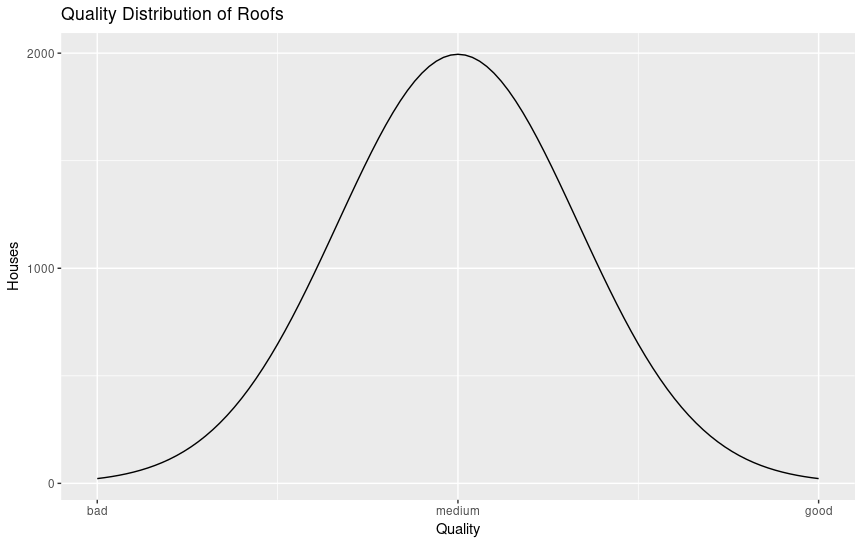The population of Bonair lives in approximately 5000 households. All of these households have traditional roofing systems. These roofs have to be maintained regularly. The actual condition of the roofs is expected to followe a normal distribution. For an increase in independent energy production it is proposed to replace these traditional roofings continuosly every time it would have been repaired by a solar shingle roof. This is especially interesting, as a study estimates the potential for solar energy production as high. [1]
The interrelation for that system exist in that sense, that on the one hand the installation of solar shingles costs an extra amount of money each time it replaces a traditional system compared to the cost of a new traditional roofing. On the other hand the solar roofs produce extra energy, which is then available in Bonaires integrated system and can be used for the households consumption and their economic ventures.
Due to budget constraints, the roofs cannot be replaced all together. Thus, the roofs with worst quality will be replaced every year. The quality of the roofs was supposed to follow a normal distribution, as illustrated in the figure. The shingles of bad quality roofs will be replaced starting on the year 2018. Besides, it was assumed that a roof has a surface of approximately 280 m², which means there is 1,400,000 m² of roofing area to be replaced in the island. It is further assumed, that approximately 33 m² of shingles result in 1 t.
[Figure 1] : Expected distribution of the quality of the existing rooftops on Bonaire
It’s expected that by the year 2068, all of the houses in the island will have solar shingles, as can be observed in the figure below.
[Figure 2]: Expected development of number of installed solar rooftops on Bonaire
Supposing that the carbon footprint of the roof with solar shingles is 274 kg of CO2 per m², the carbon footprint of a total roof replacement is approximately 76,7 t.
The other proposed engineering systems for the integrated energy system for Bonaire are wind turbines and sewer systems. All of these products are incorporated in overall maintenance strategies and are beeing assessed by a mulit- objective optimization.
Text
[1] https://www.nrel.gov/docs/fy15osti/64119.pdf
Figures
[Figure 1] Illustration by the authors
[Figure 2] Illustration by the authors
All sources last viewed 2018-02-12.

